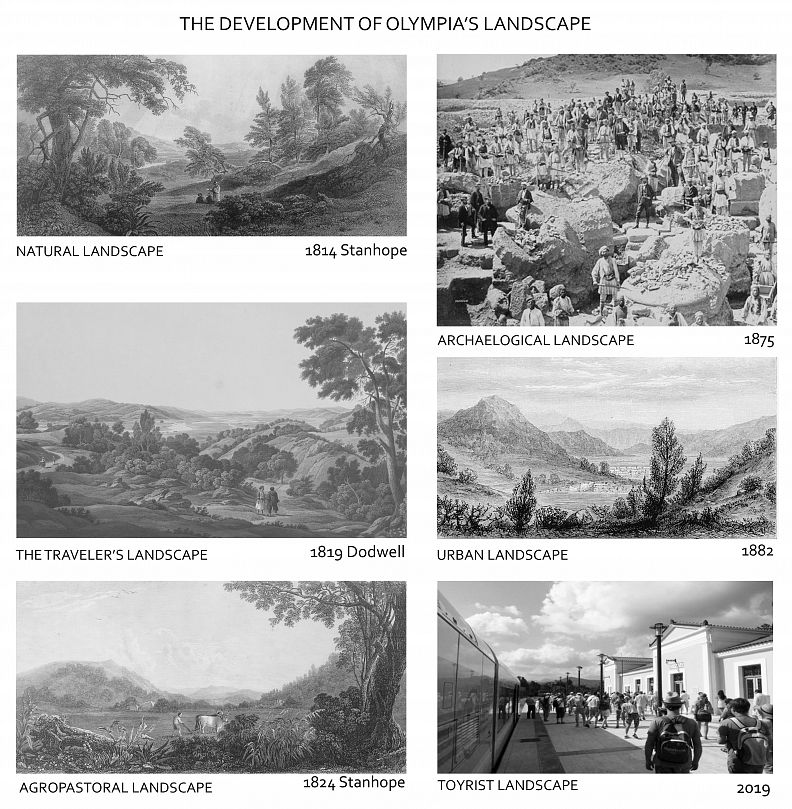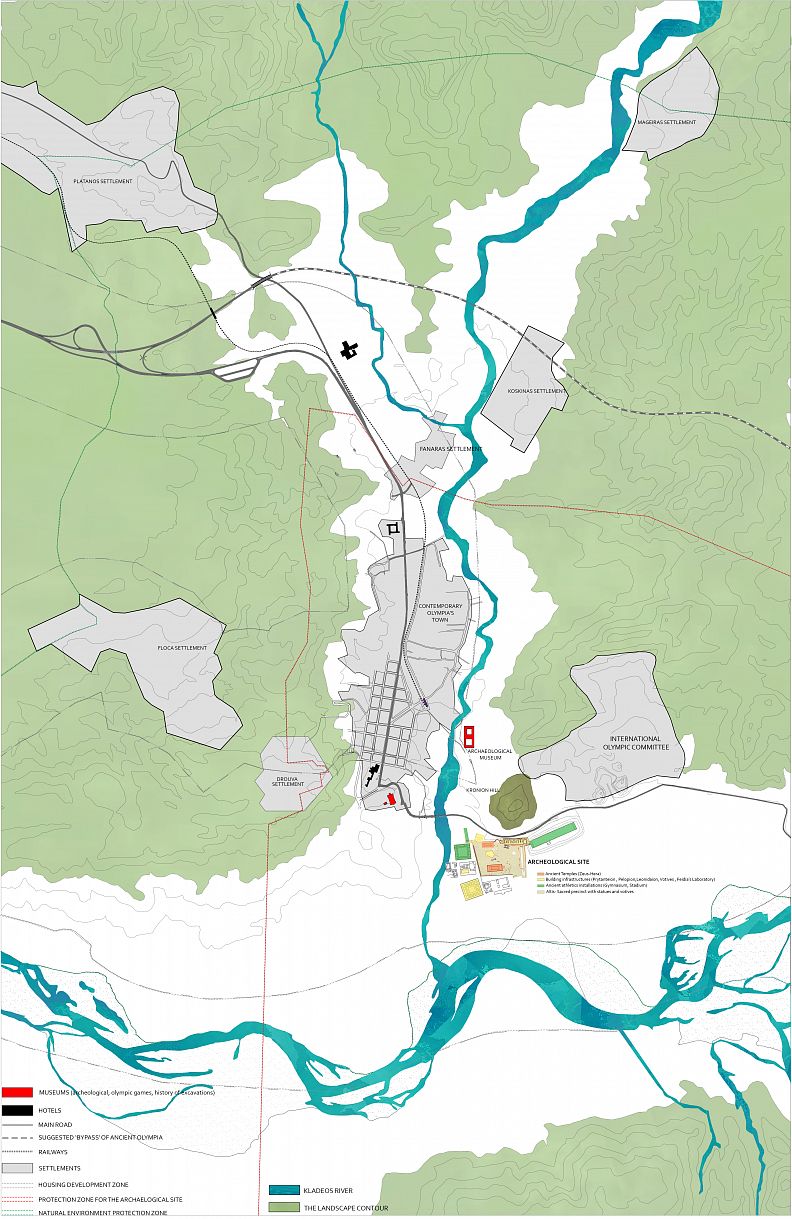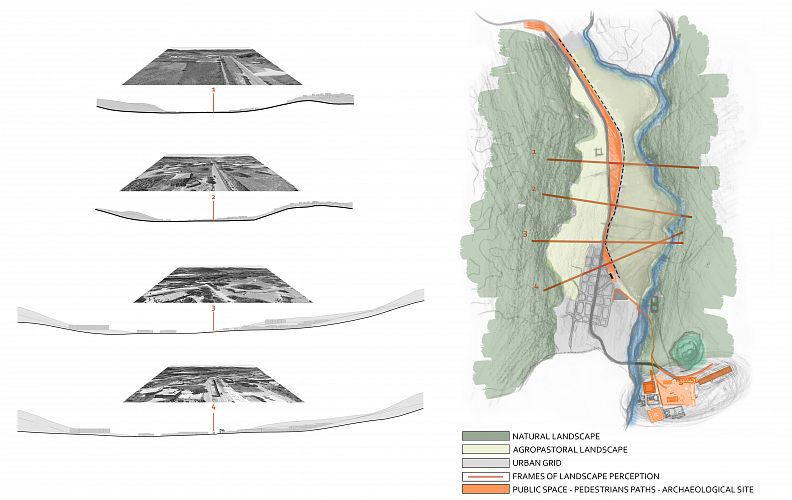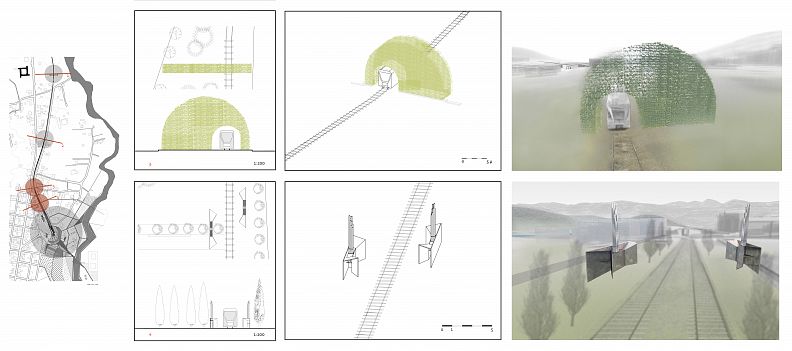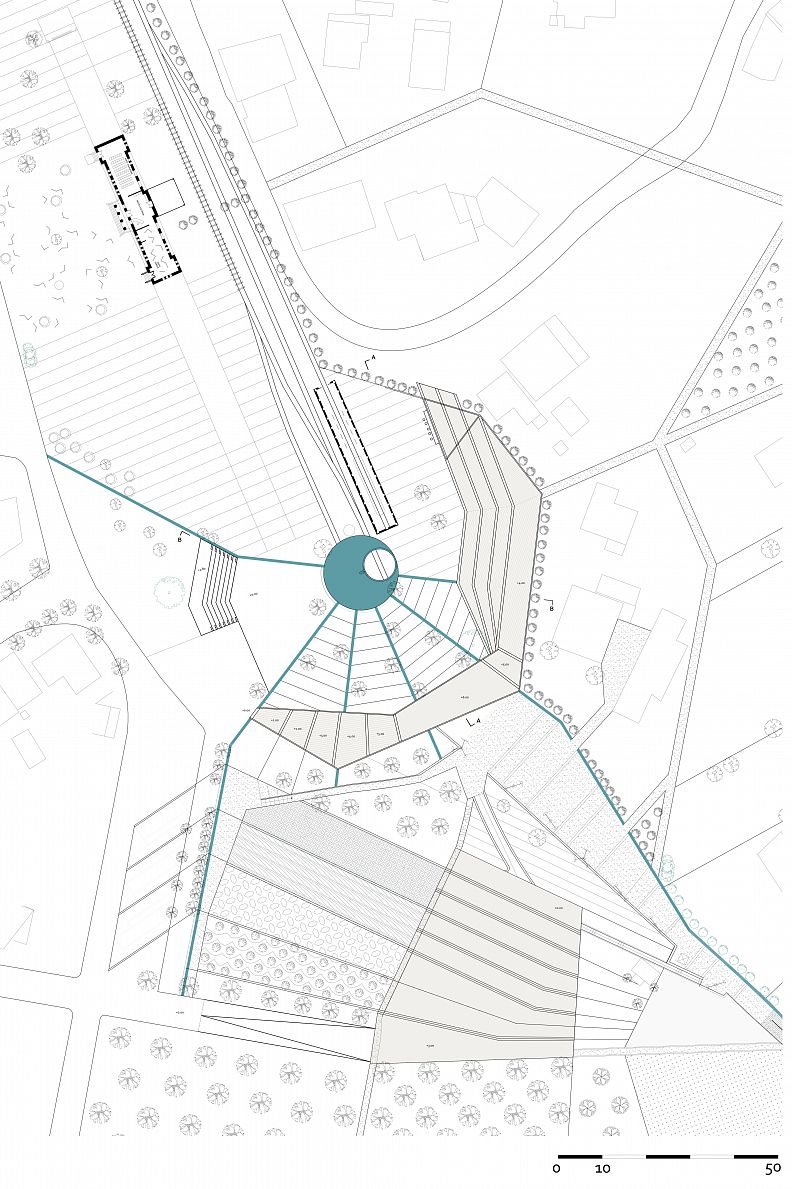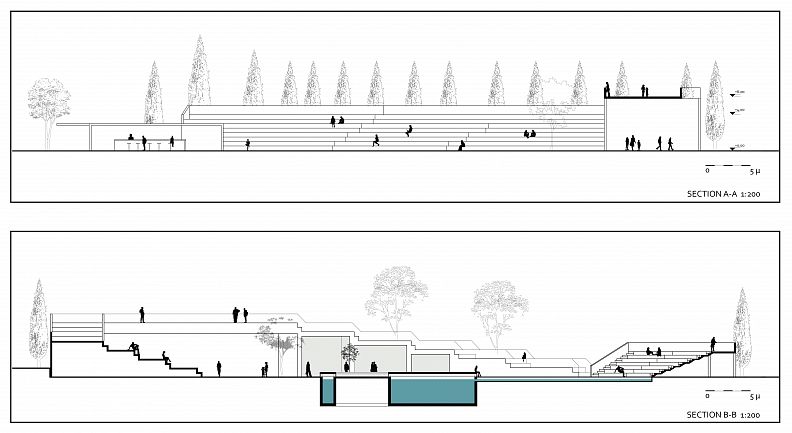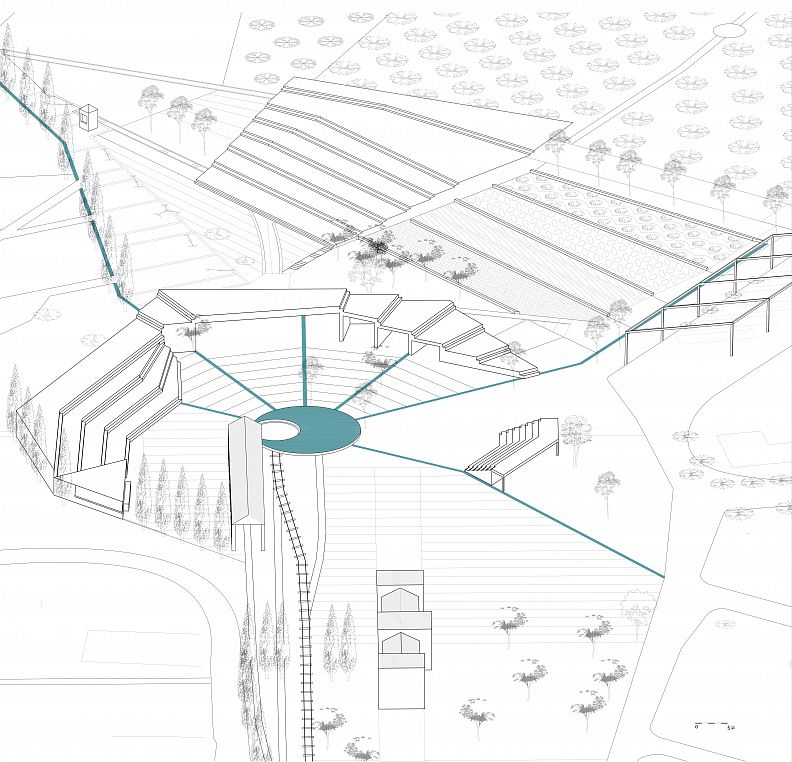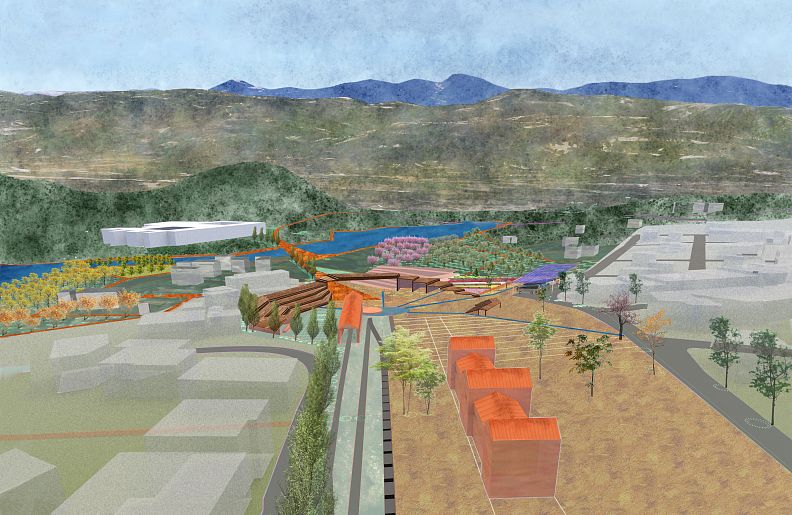Re-COLLECTION, Re-DIRECTION AND Re-NETWORKING AS A STRATEGY FOR THE REGENERATION OF THE URBAN LANDSCAPE IN ANCIENT OLYMPIA

Project idea
The urban/landscape design proposal refers to the iconic landscape of Ancient Olympia in Greece. The natural environment of a fertile valley dominated by Kladeos river has created since antiquity an ideal place for the Olympic games. Ever since, the archaeological site and the surrounding cultural landscape has attracted travelers, agricultural activities, museums (archaeological, history of Olympic games) and a modern town following a haphazard and amorphous development pattern that has resulted in fragmented public space disconnected from its natural and cultural resources.
The urban/landscape design proposal aims at creating an open, central public space that collects all public routes and redirects them towards reconnecting the landscapes of Olympia in an integrated network.
The proposal adopts the route of the railway line which follows smoothly the natural contour and the landscape, and uses this line as a re-development axis able to re-organize public space and reconnect it to the mythical-historical river and the archaeological site in an integrated master plan. The railway line is adopted as a linear collecting mechanism that attracts and draws together the natural environment, the agro-pastoral landscape, the archaeological landscapes and the urban grid of the town. All kinds of landscapes converge onto this linear artery that ends in the main public space of the city flanked by the terminal railway station, the train maintenance shed and the wagon re-redirection cyclical platform.
Project description
The project starts from the re-design of the central public space. The historical neoclassical building of the terminal station is preserved and its middle part is being reused partly as a new passenger station flanked by an assembly hall and an exhibition space on either side, enhancing thus the tripartite typology of the historic building. The obsolete railway lines, the train shed and the circular re-direction platform are preserved as monuments of industrial archaeology.
All railway facilities function as built objects surrounding and defining the main public space. The main public circular space, is complemented by the creation of a mega-structure that concludes the definition of public space, constitutes the main collector of all incoming movements of inhabitants and visitors (by rail, by cars and buses, pedestrians, cyclists). This mega structure hosts shops and a café while providing amphitheatrical seating to the public space and a belvedere overlooking the archaeological site and the valley. If follows a continuous fluid formation that is analogous in feeling with the Yokohama terminal in Japan. The adjacent parking space for cars and tourist buses are adequately situated at the perimeter of the central public space.
By being a comprehensive collector, the thus created main public space, acts as a major circular hub, in analogy to the train circular platform, that re-distributes all movements towards the archaeological site and backwards. It acts as a mega-gate that collects, re-distributes and re-networking public routes.
The central circular place, 90 m in diameter, reverberates backwards and dictates a rhythm of 90 m intervals along the railway line so that to instigate the creation of transverse sections and adjoining gates, like contrapunctual signs and initiatory devices that anticipate the arrival at the central public space. These gates are realized as a pedestrian bridge, a hydroponic wall, reminding train passing under aqueducts, a topiary formations of an arch, and a mega-harmonica, a construction that produces sound when the train passes or winds blowing along the line. All these on site sculptural and functional evens, herald the passage of the train through them and extend their presence in leading to paths towards the river.
The central public space is further enhanced by radial waterlines that end up beneath the train platform in a water reservoir useful for irrigation and fire fighting. These waterlines extend to the surrounding landscape and along with the re-redesign of paths, extend the orthogonal urban grin onto the agropastoral landscape and from there to mountain paths. The result is a colorful urban network mosaic network, like a spider web, that connects organically in an integrated whole the urban grid and cultivation plots of land with the natural environment and the cultural landscape of ancient Olympia.
Technical information
The mega-structure is made of load bearing timber frames of laminated wood and cladding with wooden deck. The pavement of the central place is made by rusty marble slabs ordered in geometric patterns.
The parking shed is made of concrete while its stepped roof is clad with wooden deck while the bus shed is a metal structure covered with corrugated metal sheets.
